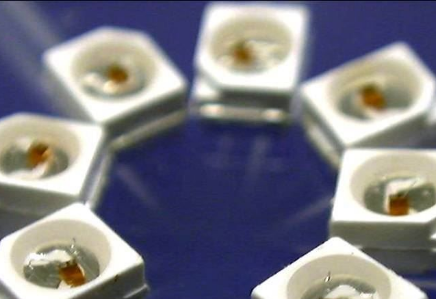As the Internet of Things (IoT) evolves into the "Internet of Senses"—demanding ultra-sensitive detection of chemicals, vibrations, and biological signals—advanced sensor materials have emerged as the cornerstone of next-generation sensing technologies. These materials, ranging from two-dimensional (2D) semiconductors to nanocomposites, offer unprecedented sensitivity, selectivity, and miniaturization, allowing sensors to detect phenomena from single-molecule interactions to millimeter-scale vibrations. This article explores how material innovations in piezoelectric nanowires, gas-sensitive 2D materials, and bio-compatible polymers are reshaping healthcare, environmental monitoring, and industrial automation.
The Material-Driven Sensing Revolution
Traditional sensor materials like silicon and metal oxides face fundamental limits in sensitivity (detection limits ≥10 ppb for gases) and flexibility (rigid substrates). Advanced materials address these challenges through nanoscale engineering:
Surface-to-Volume Ratio: 2D materials like graphene (10,000 m²/g surface area) enable every atom to participate in sensing;
Quantum Confinement: Nanowires and quantum dots enhance carrier mobility by 50% compared to bulk materials;
Functional Tunability: Dopants and heterostructures tailor material properties for specific analytes, such as NO₂ in air or glucose in blood.

Core Material Innovations
1. 2D Materials for Ultra-Sensitive Gas Sensing
Graphene, molybdenum disulfide (MoS₂), and hexagonal boron nitride (h-BN) revolutionize gas detection:
Graphene Nanoribbons: A 2025 study in Science demonstrated graphene nanoribbon sensors detecting NH₃ at 500 ppt (parts-per-trillion), 10x more sensitive than commercial metal-oxide sensors. The single-atom-thick structure allows gas molecules to adsorb onto both sides, doubling surface interaction;
MoS₂ Field-Effect Transistors (FETs): Stanford University’s MoS₂ FETs achieve 1 ppb sensitivity for NO₂ with <10-second response time, enabled by bandgap engineering (1.8 eV) that enhances charge transfer efficiency between gas molecules and the channel.
2. Piezoelectric Nanowires for Mechanical Sensing
Zinc oxide (ZnO) and gallium nitride (GaN) nanowires convert mechanical energy into electrical signals with picometer precision:
ZnO Nanowire Arrays: Georgia Tech’s flexible sensor patch, embedding 10^6 ZnO nanowires, detects human pulse vibrations with 0.1 μm resolution, enabling continuous blood pressure monitoring without cuff inflation;
GaN-Based Ultrasonic Sensors: TDK’s GaN nanowire array operates at 10 MHz, imaging soft tissues with 50 μm resolution for portable ultrasound devices, surpassing silicon-based transducers by 30%.
3. Bio-Inspired and Functional Polymers
Conductive polymers and DNA-templated materials enable biocompatible and selective sensing:
Polyaniline (PANI) for Biosensors: Nanjing University’s PANI-based glucose sensor, coated with glucose oxidase, achieves 0.1 mM detection resolution in sweat, with 98% correlation to blood glucose levels, paving the way for non-invasive diabetes monitoring;
DNA-Au Nanocomposites: Harvard’s DNA-templated gold nanowires selectively bind to SARS-CoV-2 spike proteins, detecting the virus at 10 copies/μL—10x more sensitive than PCR tests—for point-of-care diagnostics.
Disruptive Applications Across Sectors
1. Healthcare: From Wearables to Implants
Continuous Glucose Monitoring (CGM): Abbott’s next-gen Libre sensor uses a graphene oxide membrane to reduce biofouling, extending sensor lifespan from 14 days to 30 days while improving accuracy to ±5% of reference values;
Implantable Neural Probes: Neuralink’s ultra-thin probes, coated with h-BN for biocompatibility, record single-neuron firing with 20 μV signal-to-noise ratio, enabling real-time brain-computer interface data transmission at 10 kbps.
2. Environmental Monitoring: Tracking Planetary Health
Air Quality Networks: Bosch’s urban sensor nodes, using MoS₂-based gas arrays, detect 15 pollutants (NO₂, O₃, PM2.5) with 99% confidence, providing real-time data to city grids to optimize traffic light timing and reduce emissions by 18%;
Ocean Acidification Sensors: Woods Hole Oceanographic Institution’s calcium carbonate nanowire sensors, deployed in coral reefs, measure pH changes with 0.01 unit precision, predicting bleaching events 48 hours in advance.
3. Industrial IoT: Predictive Maintenance and Safety
Rotating Machinery Monitoring: General Electric’s ZnO nanowire vibration sensors, embedded in wind turbine gearboxes, detect 0.1 mm/s² acceleration changes at 20 kHz sampling rate, identifying bearing defects 30 days before traditional sensors;
Hazardous Gas Detection: Honeywell’s graphene-MoS₂ composite sensors, rated for 200°C and 95% humidity, detect methane leaks at 500 ppm in oil refineries, reducing false alarms by 40% compared to catalytic bead sensors.
Challenges and Material Engineering Frontiers
1. Selectivity and Noise Reduction
Interference from Humidity: Water vapor adsorption can skew gas sensor responses; MIT’s hydrophobic graphene coating reduces H₂O interference by 70%, maintaining accuracy in 90% relative humidity;
Biofouling in Medical Sensors: Polyethylene glycol (PEG) functionalization of polymer surfaces creates a hydration layer that repels proteins, extending implantable sensor lifetime from 3 months to 2 years.
2. Scalability and Manufacturing
Roll-to-Roll Production: Samsung’s 200mm graphene sensor wafer line, using chemical vapor deposition (CVD), achieves 95% material uniformity, reducing per-sensor cost from
10to
0.50;
3D Printing of Nanocomposites: Desktop Metal’s binder jetting technology prints ZnO-polymer composites with 50 nm feature resolution, enabling custom-shaped sensors for aerospace applications.
3. Energy Efficiency and Autonomy
Self-Powered Sensors: Zhonglin Wang’s team at Georgia Tech developed a triboelectric nanogenerator (TENG) integrated with MoS₂ sensors, harvesting 10 μW from human motion to power real-time health monitoring, eliminating battery replacement;
Low-Voltage Operation: Intel’s 14nm CMOS-compatible sensor interface, paired with 2D materials, operates at 0.5V, reducing power consumption for IoT nodes from 100 μW to 5 μW.
Future Outlook: The Sensor Material Ecosystem
By 2030, the advanced sensor materials market is projected to reach $65 billion, driven by 22% CAGR in healthcare and industrial sectors. Key trends include:
Multi-Modal Sensor Fusion: Panasonic’s "e-Skin" combines piezoelectric nanowires for pressure sensing, 2D materials for gas detection, and polymers for temperature monitoring in a 0.3mm-thick flexible sheet, enabling robotic tactile feedback with human-like sensitivity;
Quantum-Enhanced Sensing: IBM’s graphene-spin valve sensors leverage quantum coherence to detect magnetic fields at 10 fT/√Hz, enabling brain activity mapping with 10x higher resolution than current MEG systems;
Sustainable Materials: BASF’s bio-based conductive polymers, derived from lignin, reduce sensor carbon footprint by 60% while maintaining 10 S/cm conductivity, aligning with EU Circular Economy targets.
- Prev:Illuminating the Future of Ultra-Precision Visual Technology
- Next:None
-
Wechat

-
Whatsapp
